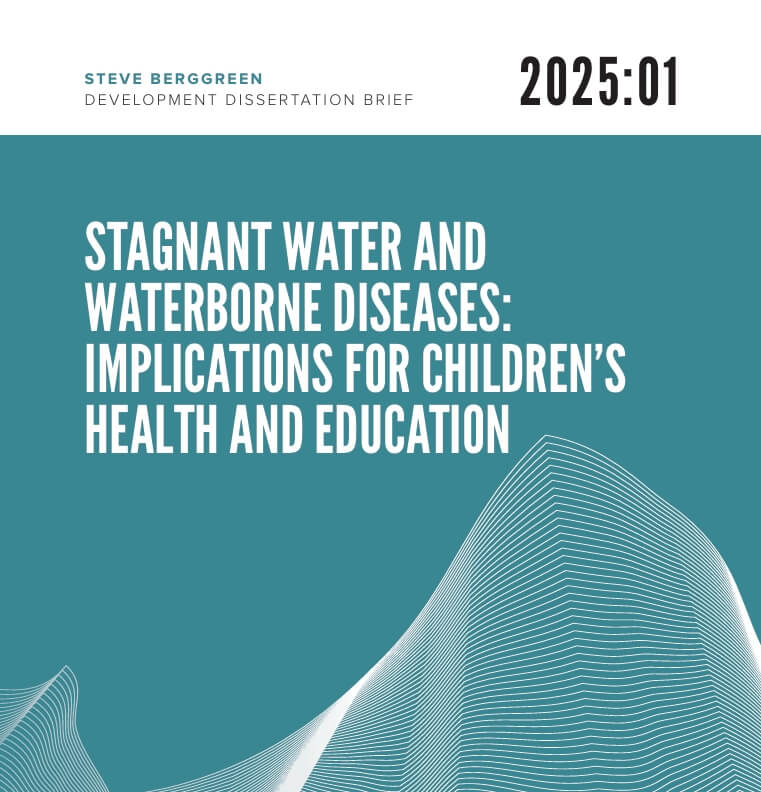STAGNANT WATER AND WATERBORNE DISEASES
Turning the Tide on Stagnant Water
As climate shocks become more frequent, access to safe water is under threat, especially in flood-prone and low-lying regions. Following heavy rains, water collects in ditches, depressions, and containers, forming stagnant pools of water that can linger for days or weeks. For many families in these regions, this water becomes the only available source for drinking, cooking, and cleaning.
A new dissertation brief by Steve Berggreen, “Stagnant Water and Waterborne Diseases: Implications for Children’s Health and Education”, sheds new light on just how dangerous stagnant water can be – and why treating it before use is critical.
Berggreen and co-author Linn Mattisson developed a novel metric using satellite data to measure stagnant water exposure in Tanzania – and their findings are stark:
- Exposure to stagnant water sources significantly increases the risk of diarrhea – an infection that causes an estimated 829,000 deaths globally, mainly among young children (updated to 505,000 deaths annually according to WHO, 2023).
- The health impacts of diarrheal infections have measurable effects on school attendance and performance.
- The risks of stagnant water intensify after floods and extreme weather events – phenomena that are becoming more frequent due to climate change.
Furthermore, Berggreen notes that most efforts focus too heavily on treatment after children fall sick, rather than on prevention. This imbalance has left large, sub-national disparities in disease outcomes – a reality clearly visible in many of the communities where Solvatten is being distributed.
From Kiribati to Sub-Saharan Africa, rural communities often rely on stagnant water out of necessity. Boiling that water isn’t always an option – firewood is scarce, fuel is costly, and the process takes time. Burning it also adds pressure to already fragile ecosystems. It drives deforestation and releases CO2 emissions that, in turn, contribute to the very climate shocks causing more stagnant water events.
While major investment in WASH infrastructure is essential, Solvatten offers an immediate and practical solution to treat the water before it causes harm. The kit, a solar-powered water treatment and heating system, uses only the sun’s energy to purify contaminated water, without the need for fossil fuels or chemicals. This makes it ideal for communities relying on stagnant or unreliable water sources.
We are grateful to Steve for allowing us to share his research and amplify this critical issue.
Read the full policy brief here: https://eba.se/wp-content/uploads/2025/04/Stagnant-Water-and-Waterborne-Diseases.pdf
Or have a look at the working paper version here: https://www.econstor.eu/handle/10419/298546.

